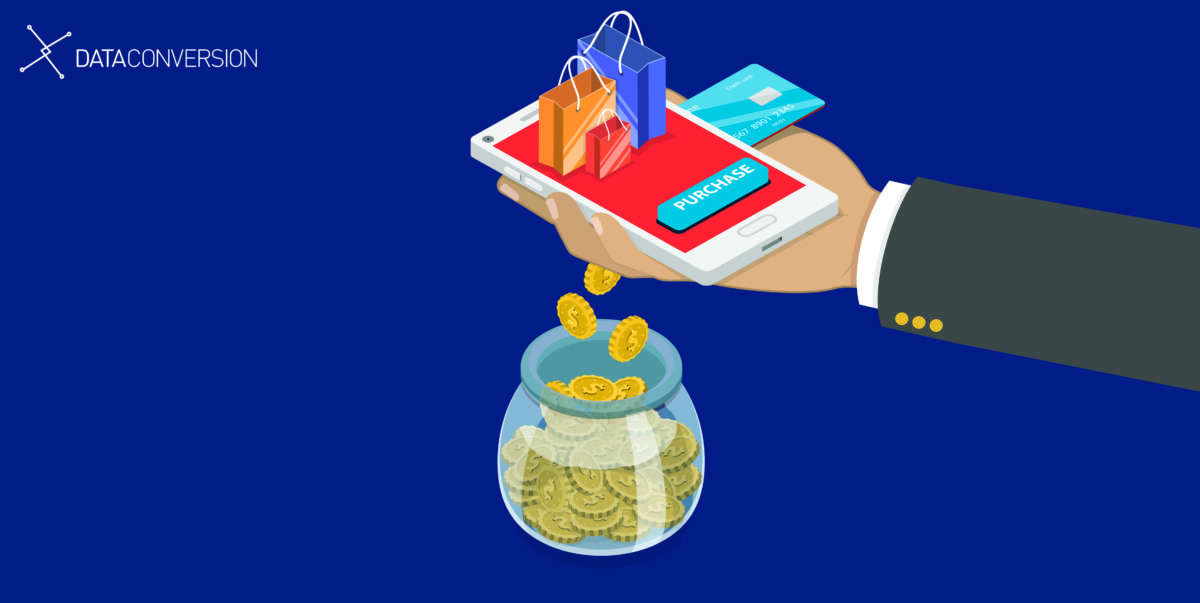Do Customer Loyalty programmes continue to have a demonstrable impact on ROI?
As we know retaining customers is far more cost effective than trying to attract new ones.
Not that you shouldn’t be actively seeking to do both.
But failing to maintain a positive relationship with those who have already purchased from you can be detrimental to your business.
In fact, the 80/20 Rule says that typically about 80% of revenue comes from just 20% of customers.
One tried and tested way to retain the customers that are most important to your business is through Customer Loyalty.
Loyalty programmes have been around for some time now and so the question remains, are they benefiting your bottom line?
Here at Dataconversion we like to think so as we have worked on a number of them throughout the years.
Of course, these have been met with varying degrees of success.
So we are going to try to look at this topic objectively.
And provide you with some of the common pitfalls that companies face when trying to implement one.
As well as some top tips from industry expert Leanne Papaioannou.
If you see a good idea copy it…
In recent years, loyalty schemes have attracted considerable interest as companies practice one of marketing’s most familiar strategies, “if you see a good idea—copy it”.
But this ‘me too’ strategy often overlooks what it is that a customer loyalty programme seeks to do: provide a competitive advantage that means customers choose your offering over that of your competitor, time and time again.
According to Leanne Papaioannou, Managing Director of Chilli Pepper Marketing, “Copy Cat” Customer Loyalty Programmes (CLPs) simply don’t work.
And even if you think they do you can be guaranteed that they aren’t working as well as they could.
Copycat Loyalty programmes are one of the biggest threats to the success of a CLP, according to Leanne.
This is because they fail to realise the element of belonging that CLPs aim to achieve.
It is essential when considering what CLP to adopt that you firstly seek to determine what it is that your customers value.
So how do we do this?
Great CLPs are driven by great insights.
You must take the time to gather the insight needed to make a CLP a success.
This means aligning the rewards you offer to your customers wants and need’s.
As Leanne puts it, “100% of customers want rewards that are relevant to their relationship with the brand”.
Of course, no CLP is 100% different.
Many use similar tactics and strategies.
But the difference between an unsuccessful CLP and a successful one is the ability for a business to understand their customers. Their drives, their motives, their frustrations.
If you can get a grasp on this from the outset you can avoid launching a programme that your customers simply don’t see any benefit in.
Before implementing a customer loyalty programme..
The biggest question we have to ask ourselves as marketers before implementing a loyalty programme is whether customers want a relationship with us to begin with.
Sure, it’s nice to be rewarded for your loyalty to your favourite hairdressers but when it comes to big brands selling low-involvement products it isn’t so clear if customers really want a relationship.
We need to ensure that we tread the line carefully between genuine value creation and simply bribing a customer into repeat purchases.
To do this we need to ensure that loyalty programmes are simple to access, relevant to industry trends, and appealing to today’s digital consumer.
The programmes themselves can be costly to implement but if done right, the long-term benefits should far outweigh this.
Of course, to make sure this happens you must first seek to understand what it is that your customers view as being valuable.
So how to we know that these programmes are valuable to begin with?
According to research carried out by Chilli Pepper and Amarach, on average, each adult in Ireland holds 4 loyalty cards.
Of the retailers surveyed on average 50% of their customers had signed up to their rewards programmes.
And of this 50%, 44.5% of their transactions were associated with gathering points.
This shows a definite interest in loyalty programmes and demonstrates that Irish consumers are actively participating in them.
But the question still remains, do they have a demonstrable impact on ROI?
Well according to the research, they most certainly do.
This can be clearly demonstrated through an increase in profits following the introduction of the programme.
In addition, we can look at whether customers who are part of a retailer’s loyalty programme spend, on average, more than those who are not.
Research suggests that they (customers who participate) in fact spend on average 34.5% more.
However, this figure varies greatly between retailers.
For example, Tesco’s loyalty members, on average, spend 80% more than non loyalty members.
Whereas Debenhams loyalty members spending 8% less than than non loyalty members indicating that their most valuable customers
are not members of their loyalty programme,
In summary…! Don’t just jump on the loyalty bandwagon, but ensure that any programme you embark upon with enhance your brand’s overall value proposition.
Once that’s established, pick the right programme to suit your brand’s values, that matches your customers’ values and will actively engage them, and again ensure these are aligned with company’s value prop to deliver return on investment.
A massive thank you to Leanne for working with us on this blog. Her understanding and passion for this topic was hugely evident throughout our conversation. So much so that we have attempted to summarise the conversation in our upcoming blog so stay tuned for that!









